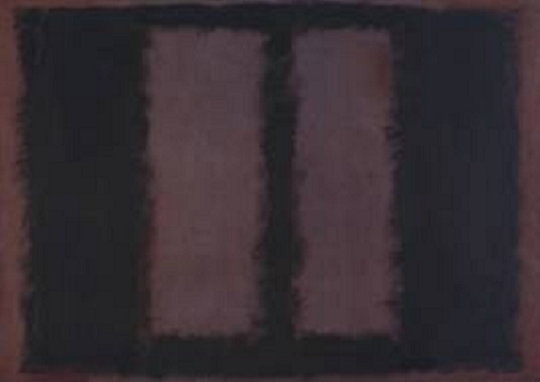Welcome to my blog!
I often get asked what kind of music I make, or listen to. I find it quite hard to answer this question. Not because my tastes are so eclectic, or outlandish, but because, although sharably specific, this kind of music doesn’t have a name. It’s more a combination of different aspects from several related musical genres, none of which in itself encompasses the entire scope. I’ve often dreamed of coming up with the perfect name which will immediately put people on the right track, a clever invention like slowcore or nugaze, or just a matter-of-fact self-explanatory post-something-or-other phrase.
Times were (back in the eighties and nineties) when I could just say I was an indie girl, and that would be enough. But the term “indie” has become very removed from what it once was, and so has the term “alternative”. I usually end up mumbling some kind of nebulous sentence that includes the words: alternative guitar music, shoegaze, post-punk, post-rock, noise, but it’s also got some poppy elements, etc. etc., hoping that the person who asked would at some point start nodding enthusiastically because they know exactly what I’m talking about, although none of us can quite put it in a neat nutshell.
Finally I got sick of these mumblings and decided to start writing a blog about this genre of music, in the vague hope that somewhere down the line, out of all the reading and listening and thinking and discussing, the right name will suddenly make itself known.
In an article about the American composer Morton Feldman, Christopher Fox writes that in the 1950s Feldman was influenced by Abstract Expressionist painters like Mark Rothko and Jackson Pollock. “What Morton Feldman took from his painter friends”, Fox writes, “was a sense of the vital importance of direct contact with the material on which one is working. Feldman’s entire output is the work of a musician devoted to maintaining this contact with the sense of sounds as living, vibrating entities. What Feldman wanted was an experience in music like that of being in front of a large Rothko, where it is possible to feel that one is going into the painting, losing any sense of time and place beyond the painting itself.”
Spot the differences: above, Mark Rothko, “Black on Maroon”; below: My Bloody Valentine, “Only Shallow”
I think that this could be quite a good start. The music I’m trying to define also gives a sense of almost tactile materiality coupled with a sense of expansive space. Favouring sound, texture and atmospherics over chord progressions and melodic linearity, it offers less a forward-driven musical narrative than a sensory space in which to stay, become immersed, lose your bearings, and delve into an experience.
I met someone who in the early nineties worked as assistant to recording engineer Alan Moulder, who produced records for shoegaze stalwarts such as Ride, My Bloody Valentine and Swervedriver. He told me that when he expressed his bewilderment at how removed Moulder’s mixes were from what was considered at the time a good rock mix, the producer exclaimed: “Sacrifice everything for the guitars!”
In “guitars” Moulder probably referred more to that musical mass (or mess) in the mix that was not distinctly melodic (like the singing) or rhythmic (like the drums). I don’t think he was suggesting that you couldn’t make this kind of music with keyboards or computers. Still, first and foremost, what we’re talking about is guitar music.
That sense of “a large Rothko” is achieved by playing the guitar in a way that creates textured, blurry and evocative soundscapes rather than straightforward, well-defined notes and chords. This is done by using lots of effects such as distortion, reverb, delay and compression, which change the spatial, temporal and tactile dimensions of the sound. But also through musical traits such as open chords, overtones, alternative tunings and dissonances. What a friend of mine whom I once dragged to one of these gigs called, and not necessarily favourably, “diagonal sounds”.
I enjoyed my friend’s definition because I thought it captured something very essential about this type of music. It tends to be made by musical nerds and gear geeks, who love referencing the music they grew up on and being inspired by the history of rock and pop music. But at its best it’s not about a nostalgic return to ideas and patterns that have already become self-evident and straight, but rather about coming in at a weird, queer angle, emphasising self-expression, experimentation and frontier-pushing.
To me this music – both introverted and radical, soft and muscular, dreamy and tense, vast and intimate – is part of a whole way of looking at the world and experiencing it, an aesthetic, intellectual, even political worldview. It’s about fraying edges, unknowability, otherness, cross-contamination, deterritorialisation… In the coming blog posts I’d like to try and define this musical world, explore it and share it. I envision writing posts in four thematic categories:
Breadcrumb Trail: thinking about sounds, ideas and tendencies
Soon: introducing exciting new bands
Candle: remembering overlooked bands from the past
Transmission: connecting to other art forms
Hopefully at some point soon I’ll just stumble on the perfect clever and snappy name for this elusive genre, and then I won’t have to write this blog anymore… In the meantime, read on!

Hi Michal, Congrats on yr new blog. Seems we share a taste for the same undefined unnamed genre. I enjoyed reading this post.. Looking forward to the next. Keep it up!
I like where this blog is going